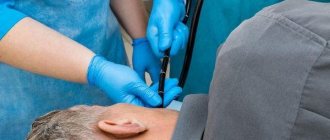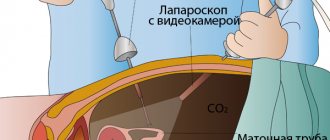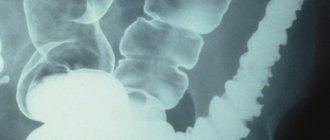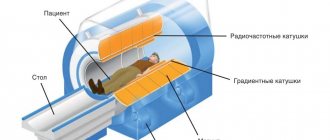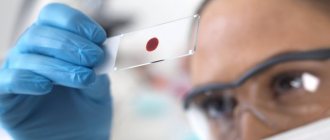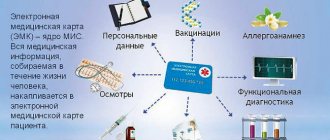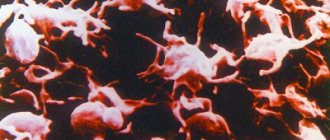What is the procedure for intestinal colonoscopy?
It is very difficult to examine such a tortuous and extended organ using standard methods - ultrasound, MRI, CT. Today, the most reliable among studies are endoscopic methods, when a video camera or optical device is inserted into the organ, which allows you to see the mucous membrane under magnification. In addition, with the help of such equipment, the doctor can remove polyps of the rectum and other parts of the large intestine, eliminate bleeding and adhesions.
The procedure is carried out only after preliminary preparation:
- Following a diet 3 days before a colonoscopy, the essence of which is not to create a large amount of feces in the organ and prevent gas formation.
- The day before the procedure, stop eating and begin to cleanse the intestines. Today it is not necessary to do volumetric enemas. The pharmacy has preparations for preparing aqueous solutions that gently and effectively empty the intestines of contents. Dosage is calculated by weight. On average, it takes up to 5-6 hours to clean an organ.
Procedure for performing a colonoscopy:
- If anesthesia is expected, the patient is questioned about the presence of allergic reactions and other contraindications.
- The person takes off the bottom of his clothes, puts on a disposable shirt and underpants with a slit in the back.
- On the couch, the patient lies on his side, leaves the lower leg straight, and bends the upper leg at the knee.
- Anesthesia is given.
- The tip of the colonoscope is inserted into the anus.
- Carbon dioxide is pumped into the intestines.
- The device with the camera is advanced, examining the inner lining of the organ.
- Having reached the cecum, the examination is completed and the instruments are removed.
- If during the diagnosis microtraumas, adhesions or polyps are found in the intestines, then the pathology is eliminated using special instruments.
- They pump out the gas.
- The equipment is removed.
- The person is woken up and his well-being is checked.
- The patient can remain in the ward for up to 2 hours until normal condition is restored.
Attention! The procedure is not performed on pregnant women, and there are other contraindications.
Well-being and possible consequences of colonoscopy
Colonoscopy is a method of invasive diagnostic and treatment examination of the lower parts of the digestive system using a colonoscope. Why is an intestinal colonoscopy done, and information about how to prepare for the test and what to take with you to the colonoscopy.
Before the procedure, general anesthesia or sedation is usually used, which suppresses the stress factor and completely eliminates discomfort. We have already written about how a colonoscopy is performed under anesthesia in a separate article.
What symptoms are normal after a colonoscopy?
Such signs are associated with the invasion of an organ by a foreign object, a change in the position of the intestines, the use of gas and other manipulations during the procedure. They are not dangerous and disappear in 1-2 days.
Anal pain
Insertion of a colonoscope may cause minor trauma to the anus, especially in patients with hemorrhoids or fissures. If redness, swelling, or bleeding occurs, you should consult a doctor. Otherwise, infectious inflammation may occur.
Abdominal pain and flatulence
Such sensations are accompanied by bloating, rumbling, and sometimes tingling in the side. This happens due to residual gas in the intestines. It will come out naturally within 24 hours. With the doctor's approval, they take medications - Espumisan, activated carbon, Enterosgel and others. It is important to know what you can eat after an intestinal colonoscopy. Following a diet will help restore the intestines and stomach for normal digestion of food.
Abdominal pain and diarrhea
Total cleansing of the organ leads to partial destruction of beneficial microflora. This causes digestive problems. They manifest themselves in the form of diarrhea and aching pain. It turns your stomach, as people say. In this case, probiotics will help - Bifidumbacterin, Hilak Forte, Acipol and others. As well as fermented milk products. To neutralize dehydration, you need to drink 1.5-2 liters of water per day.
Attention! If the diarrhea becomes debilitating, blood streaks appear in the stool, and the general condition worsens, then you should urgently call an ambulance.
Heaviness, abdominal pain and lack of stool
Normally, the first trip to the toilet “in a big way” happens 2-3 days after a colonoscopy. However, people with poor diet and lazy bowels develop constipation. The organ becomes full, the feces harden, which is manifested by minor pain, discomfort, and heaviness. In the fight against constipation, 2 points are important:
- Adequate amount of fiber in the diet. These are fruits, vegetables, herbs, cereals.
- Active lifestyle. When the whole body is in good shape, then intestinal motility will be normal.
If by the end of the first week there is no bowel movement and abdominal pain occurs, you should immediately consult a doctor. Due to swelling of the intestinal walls, incomplete removal of the tumor, injuries, and blood stagnation, an obstruction can form, which is life-threatening.
Minor pain without other symptoms
Negative sensations are associated with the mechanical effect of the colonoscope on the mucous membrane. As it moves, the device changes the position of the intestinal loops and touches the walls. In addition, pain occurs after removal of intestinal polyps and other micro-surgeries. In such cases, it is permissible to use antispasmodics to alleviate the condition. These are Drotaverin, No-shpa, Spazmalgon, etc.
Expert opinion! Pain that grows over time cannot be suppressed on its own with painkillers. In case of dangerous complications, such amateur activity can lead to death due to loss of time and unclear symptoms.
POSTOPERATIVE PERIOD
If a colonoscopy can be called an operation, it is only a minimally invasive one, since it allows surgical manipulations to be performed with restrictions. As soon as the research procedure is completed, the patient is transferred to a ward, where he will need to spend some time under the supervision of medical staff. If the procedure was performed under general anesthesia, the patient is brought to consciousness after being transferred to the ward. If after the examination the patient has no negative symptoms for one hour, then the doctor sends him home, but accompanied by relatives.
To avoid the development of serious pathologies after colonoscopy, the doctor recommends that the patient avoid eating rough foods, which will prevent the development of intestinal constipation. You need to eat easily digestible types of food, for example, broths, cereals, boiled vegetables and fruits. After the endoscopic method, stool appears mainly on days 2-3, but only if the basic condition is met, according to which the patient should eat foods recommended by the doctor. Eating foods with insufficient fiber may result in the patient being unable to go to the toilet.
If the patient is bothered by the symptoms of flatulence, which also causes stomach pain, then it is necessary to take activated carbon tablets. Doing an enema or taking laxatives without a doctor's prescription is strictly prohibited.
Before and after a colonoscopy, the patient is prohibited from taking iron supplements and antiplatelet agents. You should stop taking these medications immediately after your appointment for a bowel test. All types of medications that the patient takes should be reported to the doctor in advance, which will prevent the development of serious complications both during the colonoscopy and after its completion.
Complications of colonoscopy can occur due to the following factors:
- Low level of qualification of the endoscopist who performs the procedure.
- Insufficient preparation of the patient for the procedure. If a patient comes for examination with intestines not completely cleansed, then the doctor has the right to refuse further examination.
- Strong intestinal peristalsis.
- Thinning of the intestinal walls, as well as the development of dystrophic phenomena.
If a patient develops complications, many begin to blame the doctor. When performing a colonoscopy, the qualifications of the specialist who conducts the examination are important. But it should be noted that medical errors occur in rare cases, while patient unpreparedness is much more common.
Pain after colonoscopy
Pain after manipulation can persist for up to 5 days, however, the pain is moderate, similar to a dull pulling sensation in the lower abdomen, radiating to the intestines. The pain may worsen with bowel movements. Painful sensations after a colonoscopy examination usually appear after surgery (removal of polyps, coagulation of blood vessels).
Soreness often causes damage to the intestinal walls by the probe, for example, with pronounced narrowness of the lumen, certain anatomical features of various parts of the intestine.
When does pain indicate serious consequences?
Complications after intestinal colonoscopy practically do not occur. But there is a possibility of several adverse outcomes.
Bleeding
If the pain is accompanied by bloody discharge in the stool, then this is a consequence of:
- Damage to the mucous membrane with a colonoscope;
- Improper wound treatment when removing polyps or adhesions;
- Injury to internal hemorrhoids;
- Formation of anal fissure due to careless actions during the procedure.
In any case, you must urgently contact a proctologist to find out the cause of the bleeding. Normally, old blood may come out in the form of black and brown clots after surgical procedures. Fresh scarlet blood is considered dangerous.
Perforation of the intestinal wall
It is very difficult to pierce the membrane of a healthy adult organ. But in children, the elderly and patients with ulcerative colitis or other pathologies, the wall is very thin and easily damaged. In this case, the contents of the intestine enter the abdominal cavity, which ends in peritonitis and sepsis. Perforation occurs due to the unprofessionalism of the coloproctologist, sudden movements of the patient without anesthesia, and problems with the equipment.
Symptoms:
- Cutting pain in abdomen from every movement;
- Uneven swelling;
- Nausea and vomiting;
- Pale skin;
- Frequent pulse;
- Subsequently, a sharp increase in temperature.
To confirm, an x-ray of the abdominal cavity is taken. If the perforation is confirmed, then emergency surgery is performed.
Carefully! A patient with signs of intestinal perforation should not move; an ambulance must be called immediately.
Infection
A prolonged increase in temperature, deterioration in general health, abdominal pain and purulent discharge from the anus are signs of an inflammatory process as a result of infection. This happens extremely rarely. The patient requires additional diagnostics: blood and stool tests, bacterial culture. Antibiotics are prescribed for treatment.
Splenic rupture
Severe pain on the left under the ribs, radiating to the shoulder blade and shoulder, as well as rapid pulse, low blood pressure, cold sweat, weakness, nausea and vomiting, may be symptoms of a ruptured spleen as a result of a strong blow to the intestines with an instrument. This is a dangerous condition because total internal bleeding occurs. Need urgent medical attention.
Features of preparation for colonoscopy
It is possible to prevent the development of complications if you strictly follow all the doctor’s recommendations. To do this you need:
- In two to three days, give up gas-forming foods, fast foods, fatty and fried foods. The diet should consist of light foods;
- carry out all manipulations on an empty stomach. You can neither eat nor drink. You need to stop consuming foods 12 hours before the examination;
- cleanse the intestinal tract with an enema or laxative type medications. Patients are often recommended to take Fortrans, Duphalac or Levacol. The products must be used strictly according to the instructions;
- determine the presence of allergies to anesthetic drugs. If this is not done, then everything may end sadly;
- carry out all manipulations of the processed equipment. This will prevent infection of the patient and avoid the development of inflammatory processes.
If all recommendations are followed, adverse consequences will be avoided.
Irritable bowel syndrome (IBS) and other troubles after colonoscopy
According to patient reviews, there are situations where, after a month or more, a person develops a permanent malaise. There were bloating, colic, stool disorders, and abdominal pain of various types. Doctors advise you to reconsider your diet not only during the preparation period, but also after the procedure. There is a special diet after removal of a polyp in the intestine, which will not be superfluous even in case of diagnosis.
Attention! IBS often develops in sensitive people who fear for their health. Therefore, you can try sedative herbal preparations to stabilize the emotional background.
